Wireless communication for Jungle
23 January 2024 1:21pm
Computational Entomology Webinar II: Automated Pollinator Monitoring
23 January 2024 12:44pm
Questionnaire for Pain Points and Needs in Bioacoustics
23 January 2024 12:37pm
Hi! We're engineers eager to understand how technology can simplify acoustic work. If you use recorders, your input would be invaluable. Please consider taking our 5min survey. As a thank you, participants will be entered into a draw for a Audio Moth Recorder! Thank you so much!!
1st Joint International Scientific Conference
23 January 2024 8:34am
Monitoring setup in the forest based on the wifi with 2.4 GHz frequency.
30 December 2023 4:39pm
22 January 2024 6:22pm
I've got quite a lot of experience with wireless in forested areas and over long(ish) ranges.
Using a wifi mesh is totally possible, and it will work. You will likely not get great range between units. You will likely need to have your mesh be fairly adaptable as conditions change.
Wireless and forests interact in somewhat unpredictable ways it turns out. Generally, wireless is attenuated by water in the line-of-sight between stations. From the Wifi perspective, a tree is just a lot of water up in the air. Denser forest = more water = worse communications. LoRa @ 900Mhz is less prone to this issue than Wifi @ 2.4Ghz and way less prone than Wifi @ 5Ghz. But LoRa is also fairly low data rate. Streaming video via LoRa is possible with a lot of work, but video streaming is not at all what LoRa was build to do, and it does it quite poorly at best.
The real issue I see here is to do with power levels. CCTV, audio streaming, etc are high data rate activities. You may need quite a lot of power to run these systems effectively both for the initial data collection and then for the communications.
If you are planning to run mains power to each of these units, you may be better off running an ethernet cable as well. Alternatively, you can run "power line" networking, which has remarkably good bandwidth and gets you back down to a single twisted pair for power and communications.
If you are planning to run off batteries and/or solar, you may need a somewhat large power system to support your application?
23 January 2024 1:19am
I would recommend going with Ubiquity 2.4Ghz devices which have performed relatively well in dense foliage of the California Redwood forests. It took a lot of tweaking to find paths through the dense tree cover as mentioned in the previous posts.
Audiomoth Bat Call Triggering Settings
22 January 2024 9:48am
22 January 2024 7:26pm
Nils Bouillard (@Nilsthebatman) would be good to talk with!
Adrià López-Baucells also has lots of useful info on his website.
23 January 2024 1:09am
Thank you @carlybatist
Program Officer - Bioacoustics, WILDLABS
22 January 2024 9:37pm
How are Outdoor Fire Detection Systems Adapted for Small Forest Areas, Considering the Predominance of Indoor Fire Detectors?
8 January 2024 4:27pm
22 January 2024 6:35pm
Fire detection is a sort of broad idea. Usually people detect the products of fire, and most often this is smoke.
Many home fire detectors in the US use a radioactive source and measure the absorption of the radiation by the air. More smoke means more absorption.
For outdoor fire detection, PM2.5 can be a very good smoke proxy, and outdoor PM2.5 sensing is pretty accessible.
This one is very popular in my area.
Adeeper look into the future of sustainable human-wildlife co-existence
22 January 2024 9:36am
Introducing Citibats Cambodia Citizen Science Project
22 January 2024 7:29am
Ignite Labs: Space for Nature & Biodiversity Series
21 January 2024 2:46pm
Open-source kinetic energy harvesting collar - Kinefox
1 November 2023 5:31pm
17 January 2024 7:45pm
This is super cool!
I was wondering if the development will further touch marine or aquatic animals, make it like water wheel (even might give burden to aerodynamic). Thank you for sharing!
Best,
Dhanu
20 January 2024 7:16am
Not a water wheel but equally cool.
20 January 2024 9:10pm
Super cool! thank you for sharing!
Kenya Forest Club, Central Region – Kenya Forest Club
20 January 2024 2:53pm
It has been an exciting challenge as a member of Kenya Forest Club whose main aim is solving climate change challenges through early childhood education and training, with a particular interest in forestry.
The club hopes to have members in all schools and setup of tree nurseries
Want to learn QGIS!
26 December 2023 11:49pm
17 January 2024 3:11am
Thank you for your reply.
17 January 2024 3:13am
Thank you so much for your reply and sharing the resources.
I'll surely look into them and if I face any difficulty would let you know.
Thank you.
20 January 2024 7:33am
Thank you for the links. As a trainer in GIS I have gone through them and they are very helpful for a beginner in QGIS.
Hiring bioacoutics analysts
19 January 2024 4:18am
Women in conservation technology
17 January 2024 12:58pm
18 January 2024 3:23pm
You could look at WILDLABS' State of Conservation Tech research results! Shows ~⅓ of survey respondents are female (though this is obviously just a subset of the total people/women in conservation tech, the subset being those who filled out the survey).
@EstherGithinji runs some of the WILDLABS Women in Conservation Tech programs so she would have lots of insights into this!

Recycled & DIY Remote Monitoring Buoy
15 January 2024 1:14am
15 January 2024 9:17pm
Hello fellow Brett. Cool project. You mentioned a waterseal testing process. Is there documentation on that?
18 January 2024 10:25am
I dont have anything written up but I can tell what parts we used and how we tested.
Its pretty straightforward, we used this M10 Enclosure Vent from Blue Robotics:
Along with this nipple adapter:
Then you can use any cheap hand held break pump to connect to your enclosure. You can pump a small vacuum in and make sure the pressure holds.
Here's a tutorial video from blue robotics:
Let me know if you have any questions or if I can help out.
A gentle introduction to computer vision-based specimen classification in ecological datasets
26 January 2024 2:20pm
26 January 2024 2:24pm
Cheap camera traps with "Timelapse+" mode?
20 July 2023 3:09pm
7 August 2023 2:57pm
Thank you @mguins and @NickGardner for your praise and addition. I had not thought of the backup possibility, but it sure is a good point, Michelle. I find it amazing how often one reads about and experiences camtrap malfunction. Even the relatively cheap ones are still quite a lot of money for what is, at the end of the day, a relatively simple piece of electronics and a plastic container.
12 August 2023 6:41am
Frank's idea of using 2 camera traps is inspired!
I've fiddled with cheap camera traps a bit, and some (most?) of them use a low power, inaccurate timer for the time lapse function instead of the accurate real time clock. This is ok for Michelle's purpose, but not for Nick's as he needs to specify the exact time of day to trigger.
I made this interface to allow a camera trap to be triggered by an external device. To it you could attach, say, a timer programmed to fire at the desired times, to cause a capture. A $4 DS3231 RTC module could do the job, after the alarm times have been programmed into it with , for example, an Arduino.
17 January 2024 5:56pm
Hi Nick,
Any update from your project? did you find good price value Camera Traps?
We in Indonesia don't have local suppliers for any research grade Camera Traps like Bushnell, Browning or Reconyx. So we need to import them and the price inflated a lot even without the distributor. So, me and my team recently use the China model like GardePro or Meidase one ($40-60). Though we bought it in the US in small quantity if some of our friends travel back to Indonesia. They have more feature than typical Bushnell with same price range. The images are AI upscale, but doesn't really bother us. So I am curious if you found any good Camera Traps to recommend? Thanks!
Cheers,
Dhanu
Using "motion extraction" for animal identification
16 January 2024 3:46pm
17 January 2024 2:54am
Hi Dhanu,
Our group moved to Wildlife Insights a few years back (for a few reasons but mostly ease of data upload/annotation by multiple users) so I haven't tried EcoAssist. This being said, I will look into it as a pre-WildlifeInsights filter to analyze the tens of thousands of images that get recorded when camera traps start to fail, or get confused with sun spots (which can be common at one of our sites, a south-facing slope with sparse canopy cover).
Thanks for sharing!
17 January 2024 5:16am
You are most welcome.
I can only highly recommend joining the online events! They are really inspiring.
- and it is great to "meet" and chat with fellow WildLabbers during the "after hours".
17 January 2024 4:22pm
Very nice video in the link you posted btw:
Here is another less artistic one:
Salesforce Accelerator: AI for Climate
16 January 2024 10:15am
Ethics in Conservation out there?
16 January 2024 9:12am
Two year postdoc - Machine Learning & Bioacoustics
16 January 2024 7:49am
Cold-Weather Soundscapes
Wildlife Conservation for "Dummies"
9 January 2024 10:02pm
10 January 2024 11:24pm
Maybe this is obvious, but maybe it's so obvious that you could easily forget to include this in your list of recommendations: encourage them to hang out here on WILDLABS! I say that in all seriousness: if you get some great responses here and compile them into a list, it would be easy to forget the fact that you came to WILDLABS to get those responses.
I get questions like this frequently, and my recommended entry points are always (1) attend the WILDLABS Variety Hour series, (2) lurk on WILDLABS.net, and (3) if they express a specific interest in AI, lurk on the AI for Conservation Slack.
I usually also recommend that folks visit the Work on Climate Slack and - if they live in a major city - to attend one of the in-person Work on Climate events. You'll see relatively little conservation talk there, but conservation tech is just a small subset of sustainability tech, and for a new person in the field, if they're interested in environmental sustainability, even if they're a bit more interested in conservation than in other aspects of sustainability, the sheer number of opportunities in non-conservation-related climate tech may help them get their hands dirty more quickly than in conservation specifically, especially if they're looking to make a full-time career transition. But of course, I'd rather have everyone working on conservation!
13 January 2024 3:14am
Some good overview papers I'd recommend include:
- Besson, M., Alison, J., Bjerge, K., Gorochowski, T. E., Høye, T. T., Jucker, T., ... & Clements, C. F. (2022). Towards the fully automated monitoring of ecological communities. Ecology Letters, 25(12), 2753-2775.
- Speaker, T., O'Donnell, S., Wittemyer, G., Bruyere, B., Loucks, C., Dancer, A., ... & Solomon, J. (2022). A global community‐sourced assessment of the state of conservation technology. Conservation Biology, 36(3), e13871.
- WILDLABS-led research! Led by @TaliaSpeaker and @StephODonnell
- Lahoz-Monfort, J. J., & Magrath, M. J. (2021). A comprehensive overview of technologies for species and habitat monitoring and conservation. BioScience, 71(10), 1038-1062.
- Tuia, D., Kellenberger, B., Beery, S., Costelloe, B. R., Zuffi, S., Risse, B., ... & Berger-Wolf, T. (2022). Perspectives in machine learning for wildlife conservation. Nature communications, 13(1), 792.
- Stowell, D. (2022). Computational bioacoustics with deep learning: a review and roadmap. PeerJ, 10, e13152.
- I'm biased towards bioacoustics because that's what I focus on, but this regardless this is an excellent horizon scan of AI/ML for conservation and acoustics!
- Borowiec, M. L., Dikow, R. B., Frandsen, P. B., McKeeken, A., Valentini, G., & White, A. E. (2022). Deep learning as a tool for ecology and evolution. Methods in Ecology and Evolution, 13(8), 1640-1660.
I'd also encourage you to follow the #tech4wildlife hashtags on social media!
15 January 2024 4:27pm
I'm also here for this. This is my first comment... I've been lurking for a while.
I have 20 years of professional knowledge in design, with the bulk of that being software design. I also have a keen interest in wildlife. I've never really combined the two; and I'm starting to feel like that is a waste. I have a lot to contribute. The loss of biodiversity is terrifying me. So I’m making a plan that in 2024 I’m going to combine both.
However, if I’m honest with you – I struggle with where to start. There are such vast amounts of information out there I find myself jumping all over the place. A lot of it is highly scientific, which is great – but I do not have a science background.
As suggested by the post title.. a “Wildlife Conservation for Dummies” would be exactly what I am looking for. Because in this case I’m happy to admit I am a complete dummy.
Africa Tech Summit London
15 January 2024 10:18am
Africa Climate Tech & Investment Summit
15 January 2024 10:10am
Free Spatial Analysis Course: Going Places with Spatial Analysis
15 January 2024 9:42am
Free Live Training Seminar: Bring Your Imagery to Life with ArcGIS Reality
15 January 2024 9:32am
Information to the young who are the future
8 January 2024 4:35pm
12 January 2024 11:48am
Great work @CathyNj kindly check out the below opportunity. I reckon you may find it useful for your work.
"Join Planet Ed and The Nature Conservancy for the Planet Media Call for Pitches to Shape the Future of Climate Education for Kids!"
13 January 2024 4:08pm










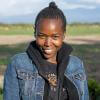

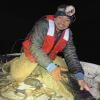

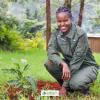




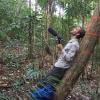




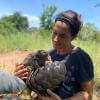




18 January 2024 8:17pm
Hi Dilip,
I do not have data about signal distortion in a forest area and with the signal you are intended to use.
However, in a savannah environment, when I put a tour on the highest point of the park, Lora signal (avg 900MHz) is less distorted than WiFi signal (2.4GHz). This is normal as a physics law: the frequency determines the wave length, and the less the length (obviously the less the frequency), the less obstructed the signal.
So, without interfering with your design, I would say that in a forest configuration, WiFi will need more access points deployed and may be more costly, and in your context, even when using LoRa, you will need more gateways than I have in a savannah.
To design the approximate number of gateways, you may need to use terrain Visibility analysis.
To design the cameras deployment, you will need to comply with the sampling methods defined in your research. However, if it is on for surveillance reasons, you may need to rely on terrain visibility analysis also.
Best regards.